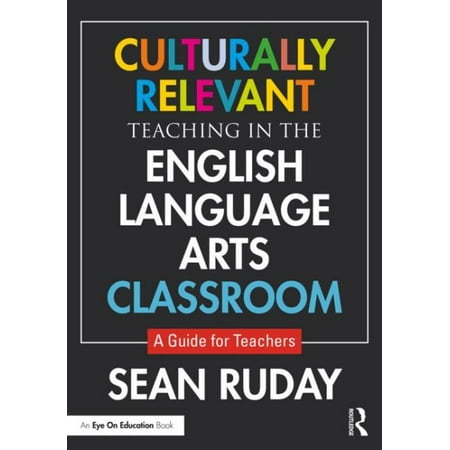At twenty-one years old, and in the last year of my undergrad, I stood in line for the bathroom at a local coffee shop. My hair is off my shoulders; I’m wearing cuffed jeans, brown flats to match. There are two signs on two separate doors, both differently labeled. One sign paints a figure in a dress, while the other is straight legged, indicating male or female. I’m there waiting as both rooms are taken, when the straight legged door swing open, a male exiting. The other room is still unavailable, and had the signs not been labeled to each door differently, the logical response would be to enter. I wait. The door painted with the figure wearing a dress swings open. I enter.
Since thoroughly embedding myself in literature while pursuing an English Education degree, I have grown a particular interest in the confinements of society –specifically related to gender roles. Growing up, my tom boy self could never envision doing laundry and dishes for a whole family, as I watched my heroine mother do so day after day. My brother and I had separate chore charts. Ryan took out the trash, completed outside tasks such as mowing the lawn. I was assigned, in print, to vacuum the carpets, clean the bathrooms, and wash the dishes. Without even thinking, a dynamic was created, and still exists in most households worldwide today. Males work the hard labor, heaving lifting, and with machinery. Females clean with the perfect touch and cook with soul. And these roles cannot interchange –supposedly. Gender roles are interesting, as they are foundational elements that construct the unwritten social stereotypes we engage with daily, without thinking twice. Our current generation challenges these expectations fearlessly. The millennial age is publicly enraged by the sexual assault rates, specifically targeting women. The LGBTQ+ community has progressively flourished, and continues to raise societal standards through marches and activism. The percentage of marriages with stay-home-fathers and a full time employed mother continues to increase. The leaps of transformation the millennial age, and the generations before, have created is revolutionary. Gender roles and stereotypes are questioned, brought to attention, and refused. Legendary authors such as Hooks, who taught us feminism is for everyone, or gender is performative –Judith Butler. Ellen, remains the first female television star who came out of the closet on national television –an icon for most. It is a privilege to be surrounded by strong women, creating a sisterhood among all. This is a time for change, and also a time of resilience.
So, why did I wait for the second door?

 Dr. Ruday bases his teaching style, generally, off of this approach. Dr. Ruday also heavily emphasizes on key essential questions to challenge his students to think broadly, and uses these to guide his lessons. Dr. Ruday often highlights the question “so what?” These key essential questions allow students to answer this “so what” question and connect classroom content with their out of school lives and community. Dr. Ruday includes this idea especially in one of his works, Culturally Relevant Teaching In the English Language Arts Classroom: A Guide for Teachers which is just one work he has written for future and current teachers to urge them to keep classroom content tied with students out of classroom lives. This is one way Dr. Ruday shares his work with the world. He also participates in conferences, and has a variety of articles that have been published as well –some of which are geared towards researchers and others gear towards practitioners.
Dr. Ruday bases his teaching style, generally, off of this approach. Dr. Ruday also heavily emphasizes on key essential questions to challenge his students to think broadly, and uses these to guide his lessons. Dr. Ruday often highlights the question “so what?” These key essential questions allow students to answer this “so what” question and connect classroom content with their out of school lives and community. Dr. Ruday includes this idea especially in one of his works, Culturally Relevant Teaching In the English Language Arts Classroom: A Guide for Teachers which is just one work he has written for future and current teachers to urge them to keep classroom content tied with students out of classroom lives. This is one way Dr. Ruday shares his work with the world. He also participates in conferences, and has a variety of articles that have been published as well –some of which are geared towards researchers and others gear towards practitioners. Dr. Ruday and I also discussed what he personally likes to read and how this impacts his teaching. Being a professor that loves his field, most of the content his reads generally can be applied to his classroom. He explains to me that keeping up with Young Adult literature is essential to effective teaching, as it keeps you in the loop of pop culture and what your students are most likely reading as well. Incorporating YA novels in the classroom is essential, as the students will most likely relate heavily to them. Two of Dr. Rudays current favorites are On the Come Up by Angie Thomas and Internment by Samira Ahmed. These two novels embody what Dr. Ruday considers to be valuable information inside the classroom.
Dr. Ruday and I also discussed what he personally likes to read and how this impacts his teaching. Being a professor that loves his field, most of the content his reads generally can be applied to his classroom. He explains to me that keeping up with Young Adult literature is essential to effective teaching, as it keeps you in the loop of pop culture and what your students are most likely reading as well. Incorporating YA novels in the classroom is essential, as the students will most likely relate heavily to them. Two of Dr. Rudays current favorites are On the Come Up by Angie Thomas and Internment by Samira Ahmed. These two novels embody what Dr. Ruday considers to be valuable information inside the classroom.
 Throughout my college years I have noticed that, even as an English major, my high school did not prepare me for college or the real world. Coming into college I did not have a resume, or did not know how to construct one, did not know how to properly write a professional email or letter, had never used APA format, could barely use MLA format, and had never written a paper anything different than a standard five paragraph essay. That is a long list of core essentials I missed out on. Other college students and young adults are just as clueless and some have even less instruction than I have been given.
Throughout my college years I have noticed that, even as an English major, my high school did not prepare me for college or the real world. Coming into college I did not have a resume, or did not know how to construct one, did not know how to properly write a professional email or letter, had never used APA format, could barely use MLA format, and had never written a paper anything different than a standard five paragraph essay. That is a long list of core essentials I missed out on. Other college students and young adults are just as clueless and some have even less instruction than I have been given.